Osteochondrosis, as the most common spinal disease, is today found in people of completely different ages, although not so long ago it was considered an exceptional age-related disease.It is characterized by the appearance of degenerative dystrophic changes in the intervertebral discs, which leads to pain and creates prerequisites for the formation of convexity and intervertebral hernias.The disease can affect any part of the spine, although osteochondrosis of the thoracic region is extremely rare.This causes significant difficulties with its diagnosis, as the symptoms of the disease mimic pathologies of the cardiovascular system.However, if a diagnosis is made, it is important that you start treating thoracic osteochondrosis immediately.Otherwise, it can cause extremely serious complications and loss of efficiency.
Expert opinion on a doctor
"Because there are many nerve endings in the intervertebral discs, all changes in its structure lead to the transmission of the relevant brain signals, leading to the appearance of pain in the affected area."
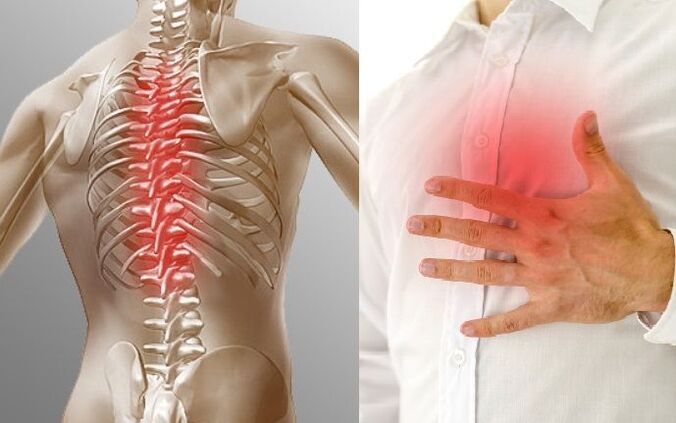
What is tortacal osteochondrosis and characteristics of its treatment
The osteochondrosis of the chest spine occurs at less than 10% of the total number of cases diagnosed with this disease.This is due to the low mobility of the chest spine.But this is the main insidiousness of thoracic osteochondrosis, as its symptoms in many ways remind signs of diseases of the cardiovascular system.Therefore, patients often initially turn to a cardiologist or other specialist and undergo treatment courses that do not carry results, but ultimately see a neurologist when the disease has already become advanced.
There are 12 vertebrae in the chest.There are all intervertebral discs among them, but more often the first and last segments of the spine of this department are affected by osteochondrosis.
In the future, the situation can be complicated by compression of the spinal roots that come out in pairs at the level of each vertebra of the spinal cord and are responsible for regulating the functioning of the lungs, the internal organs of the abdominal cavity and pelvis.As a result, there will be signs of disorders in their functioning, as well as pain radiating to the ribs called radicular syndrome.
In general, thoracic osteochondrosis can manifest:
- Pain in shoulder blades, which intensifies with deep inspiration;
- pain behind the sternum in the area of the heart;
- The appearance of cough, shortness of breath due to the development of bronchitis, bronchial asthma, pneumonia and other diseases of the lungs and bronchi;
- pain in the right hypochondrium resulting from liver disorders, gall bladder and its ducts, which may be due to the development of cholecystitis, metabolic disorders, etc.;
- Pain in the left hypochondrium or shingles due to pancreatic dysfunction, which leads to an increased risk of developing diabetes;
- Decreased immunity, the appearance of allergic reactions due to suppression of the innervation of the adrenal glands;
- Urine disorders due to kidney malfunction and the addition of infectious diseases, more special pyelonephritis;
- Disorders of female and male genital organs, including infertility.
In this case, severe pain causes reflex tension in the posterior muscles, which causes unpleasant sensations in them and increases the risk of pinching of nerve structures.
The risk of changes in the functioning of the internal organs increases sharply in the short stages of development of thoracic osteochondrosis, when the protrusion of intervertebral discs is already observed, ie.The formation of protrusions and intervertebral hernias.In such situations, the pathological convexity will compress the roots of the nerves, which will cause disorders in the innervation of the respective internal organs and the development of their diseases.
Thus, although thoracic osteochondrosis is a very rare disease, it can affect the functioning of the whole body.Therefore, it requires immediate initiation of complete treatment.To do this, you should contact a neurologist who will evaluate the patient's condition, examine the test results available and develop an individual treatment program.This will largely depend not only on the degree of thoracic osteochondrosis (there are 4 stages, the easiest of which is 1st), but also on the nature of the diseases, the type of concomitant diseases, age and a number of other factors.Therefore, with the right approach, the treatment of patients with approximately the same degenerative changes in the discs may be significant differences.
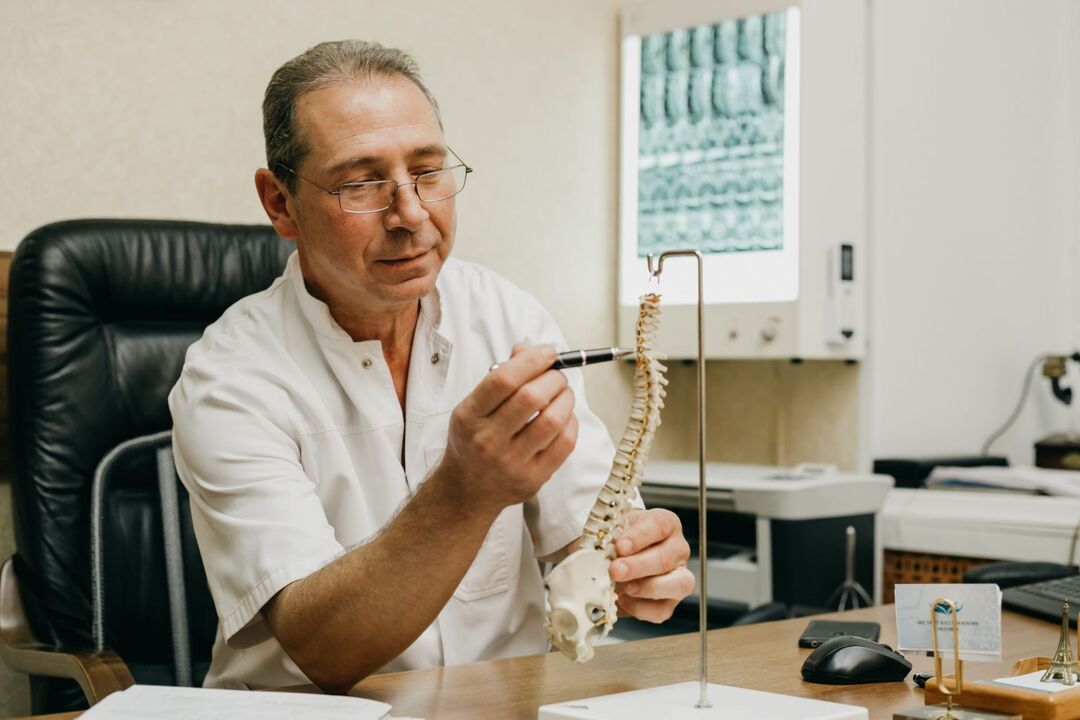
Treatment of thoracic osteochondrosis is always complicated.It is aimed at solving the following problems:
- Elimination of unpleasant symptoms of the disease, which improves the quality of life of the patient and restores complete functionality;
- Improve the quality of blood circulation in the affected area, which activates the metabolic processes and will facilitate the processes of regeneration in the disk;
- elimination of the causes of osteochondrosis;
- Reducing the likelihood of complications of the disease.
Patients may be prescribed for this:
- Lifestyle correction;
- drug therapy;
- Exercise therapy;
- Manual therapy;
- adhesion therapy;
- Physiotherapy treatment.
Which specific methods will be recommended to the patient are determined by the attending physician, depending on the severity of the degenerative dystrophic changes in the spine.So, if thoracic osteochondrosis is diagnosed at the first stage of development, which, unfortunately, is quite rare, it is usually enough to limit yourself to make certain adjustments to your lifestyle, exercise and manual therapy.
But if the disease has already progressed to the 2nd, and especially at the 3rd stage, additional drug therapy, adhesion, etc., will definitely be recommended.In addition, if osteochondrosis has already provoked the formation of intervertebral hernias, especially large, and is accompanied by severe radicular syndrome that cannot be eliminated by conservative methods, it is possible to achieve improvement in the patient's condition only when using surgery.
Thus, with thoracic osteochondrosis, as well as with similar lesions in other parts of the spine, treatment is aimed at stopping the further progression of degenerative changes in the intervertebral discs and improving the patient's well-being.With existing, especially large lesions, it is not yet possible to achieve complete recovery of cartilage tissue, not only on intervertebral discs, but also on any other joints.So, let's look at the main methods of treating thoracic osteochondrosis and their characteristics.
Lifestyle correction
After diagnosing thoracic osteochondrosis, the doctor surely recommends that you make some changes to your usual lifestyle.If the patient shows signs of excess weight, he is advised to take measures to reduce it.But all kinds of weight loss diets, especially monocomponent, are contraindicated.Nutrition should be complete and varied so that the body receives all the substances necessary for proper functioning and the metabolic processes in the intervertebral discs continue properly.Therefore, it must take as fully as possible with the principles of rational nutrition.
It is also recommended that all patients increase their level of physical activity, especially those who lead a sedentary lifestyle.This can be daily walking, swimming, yoga or Pilates.But serious physical activity, in particular intensive training for simulators, jumping sports and weight lifting are contraindicated.

If the patient's profession involves heavy physical labor, such as heavy lifting, it is recommended that you try to change it.This is due to the fact that increased back loads in the presence of osteochondrosis can play the role of trigger in the rapid progression of degenerative changes in the disks.
Absolutely all patients with thoracic osteochondrosis are recommended to change the mattress to orthopedic with medium hardness, as well as to buy an orthopedic pillow.This will ensure that the physiological curves of the spine are maintained and will prevent the discovers of the disc.
Treatment of the drug of thoracic osteochondrosis
In the treatment of osteochondrosis, patients are usually prescribed a complex of medicines.Some of them are recommended to be taken only from time to time, in particular during the exacerbation of the disease, while others should be used in courses, the duration of which is chosen by the doctor.
When prescribing specific drugs, the neurologist must understand whether the patient has concomitant diseases and their character.This is necessary to exclude contraindications to taking certain medicines.
In general, the following drug groups may be prescribed for thoracic osteochondrosis:
- NSAIDs;
- corticosteroids;
- muscle relaxants;
- vitamins;
- chondroprotectors;
- Actual use products;
- It means to improve microcirculation.
NSAID
Non-steroidal anti-inflammatory drugs are one of the most extensive groups of medicines as they have a huge list of indications for use, which includes breast osteochondrosis.They have anti -inflammatory and analgesic properties, therefore shown to exacerbate the disease and the onset of pain.
Today, there are 4 generations of NSAIDs, among which the most remedies of the 4th generation are considered to be the most favorable and most effective.They are distinguished by their selective action and have almost no negative effect on the mucous membranes of the stomach and duodenum.At the same time, the worse drugs in this group should not be used, especially for a long time in the presence of gastritis and peptic ulcers of the stomach and duodenum, as they can cause their exacerbation.
NSAIDs are available in almost all possible dosage forms, allowing you to choose the medicine according to the method of use.Therefore, in the early stages of thoracic osteochondrosis, the use of ointments, gels or creams is indicated.For more pain, capsules or tablets are preferred and if it has no effect, intramuscular injections of drugs are allowed.
Corticosteroids
The drugs in this group belong to the hormonal group and contain synthetic analogues of adrenal hormones.Therefore, they have a powerful anti -inflammatory effect and are indicated for severe inflammatory processes.But due to the ability to cause a number of negative side effects, they are usually prescribed in the form of solutions for injection and only in short courses.
In addition, corticosteroids in combination with topical anesthetics are used to perform paravertebral blocks.They are indicated for very intense pain, which deprives a person of his or her ability to work, but can only be performed in a medical institution.Blockades help to quickly relieve even very intense pain and consists in the introduction of a prepared solution at points next to the spine, in the area where the spinal belly passes.
It is recommended that such procedures be performed no more than 4 times a year.
Muscle relaxants
Muscle relaxants are a group of medicines designed to relieve muscle spasms.Let us remember that they often act as a reflex response to the body of pain.Therefore, the use of muscle relaxants will help reduce the severity of pain in thoracic osteochondrosis.
Vitamins
In the treatment of thoracic osteochondrosis, vitamin complexes containing increased amounts of vitamins B can be prescribed further.This is necessary to improve the quality of the passage of bioelectric impulses along the nerves, which is especially important in the case of radicular syndrome.This prevents the development of disorders in the functioning of the organs, internally from the spinal roots of the intervertebral discs located at the level of the lesion.
Chondroprotectors
Chondroprotectors are a relatively new group of medicines actively prescribed for thoracic osteochondrosis.As active ingredients, they contain mainly compounds that are absolutely natural to the human body and are used by it for the regeneration of intervertebral discs and other cartilage.
But at the same time, there is still no convincing evidence of the effectiveness of drugs in this group in advanced forms of osteochondrosis, although they work quite well in the initial stages.At the same time, the natural origin of chondroprotectors provides a high level of safety.
These drugs are available in various forms, including capsules, topical preparations, powders and solutions for injection.The best results are observed in the administration of injection chondroprotectors.But despite all the positive aspects of medicines in this group, they are characterized by a high price, which, in combination with the need to use them in courses of 30 days or more, make their use not accessible to all.
Up -to -date products
In addition to the ointments, creams and gels containing NSAIDs and chondroprotectors discussed above, the treatment of thoracic osteochondrosis may include the use of warming and topically irritating agents.Their principle of action is based on irritation of skin receptors at the site of application.This leads to active blood flow to the area of administration and therefore the flow of nutrients.As a result, the quality of eating of the intervertebral discs improves and the pain decreases.
Products to improve microcirculation
Medicines in this group are also used to improve blood circulation quality and activate metabolic processes.
Exercise therapy
Therapeutic physical education plays one of the leading roles in the treatment of thoracic osteochondrosis as it allows:
- Strengthening the muscle corset, which will guarantee the creation of high quality spine support;
- normalization of muscle tone;
- Activate blood circulation, which will improve the course of metabolic processes in the affected intervertebral discs.
But patients need to understand that the use of general exercise sets can adversely affect the course of the disease and well -being, as they do not take into account individual characteristics, the degree of osteochondrosis and existing concomitant diseases.Therefore, for the effective treatment of thoracic osteochondrosis, it is necessary to develop a program for exercises for therapy on an individual basis.
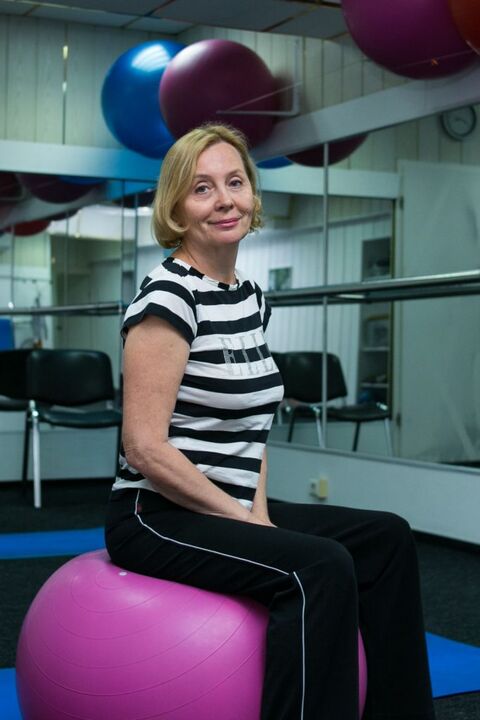
Initially, so that the patient can master the proper exercise technique, it is recommended to exercise under the supervision of an exercise therapy instructor.It will be able to properly calculate the workload in accordance with the level of physical development of a person and adjust his movements so that the exercises performed will bring maximum benefit.The program will gradually become more complicated and once it is fully mastered, the patient can practice at home.But in order for the hours to produce good results, they must be done daily.
When performing all therapeutic exercises, it is important to avoid sudden movements.
Manual therapy for breast osteochondrosis
One of the most effective ways to treat thoracic osteochondrosis is manual therapy as it not only allows you to work well on the muscles, but also involves the effect on the spine.Here is how it differs from therapeutic massage, which is also very useful for osteochondrosis but is not able to have the same effect as manual therapy as it does not include the spine.
But in order for manual therapy to bring only advantages, you must be careful when choosing a specialist to accomplish it, since the effect on the spine must take place with accurate accuracy.Otherwise there is a high risk of complications.
Manual therapeutic sessions begin with a pendant and relaxation of the muscles.The doctor works well in every area of the back, eliminates spasms and prepares soft tissues for more active action.He then begins to use mobilization and manipulation techniques, which can sometimes be accompanied by little discomfort and crunching.
The method of manual therapy, which is distinguished by the use of special techniques that have proven themselves for 20 years as one of the highest efficient, deserves special attention.They not only have a beneficial effect on the affected intervertebral discs, but also to improve the quality of functioning of all internal organs, because, as mentioned above, they have a close connection to the spine.
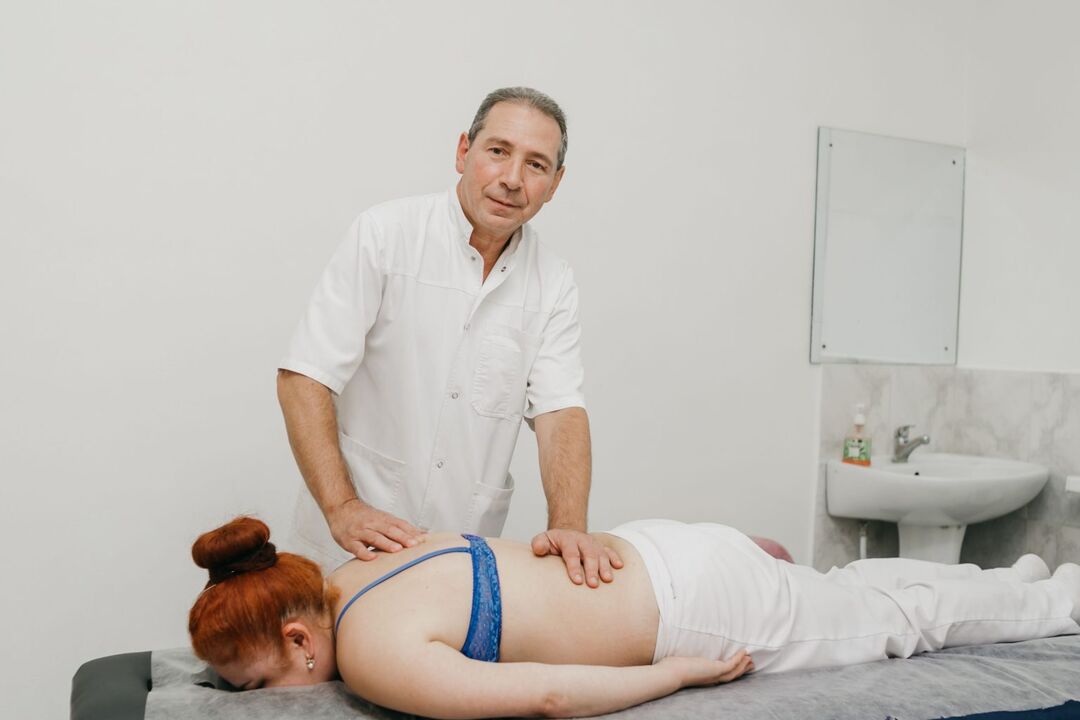
In general, a course of manual therapy sessions provides:
- Restoration of the correct anatomy of the spine with the return of the vertebrae to their designated places;
- increasing the distance between the vertebrae bodies, which has a beneficial effect on the condition of the intervertebral discs by reducing the pressure exerted on them;
- normalization of muscle tone;
- Elimination of functional blocks;
- improving the functioning of the lungs, bronchi, heart and gastrointestinal tract;
- Increasing immunity and decrease in allergen exposure.
At the same time, after the first session, there was an improvement in well -being.Subsequently, patients noted a progressive decrease in pain and improvement in general condition, increased efficiency and mood.
Physiotherapy
Physiotherapy methods are widely used to treat thoracic osteochondrosis after the acute stage of the inflammatory process is completed.They can further reduce the severity of back discomfort as well as have a number of other positive effects on the body.
The following is most commonly prescribed for thoracic osteochondrosis:
- Electrophoresis with the introduction of drugs - this method allows for deeper penetration of the drug components into the tissues and enhances their therapeutic effect by the use of weak electrical current;
- Magnetotherapy is a method of physiotherapy treatment that is based on the beneficial effects of the magnetic field on the body, which helps to stimulate blood circulation in the area of impact, which leads to the activation of metabolic processes, reducing pain and swelling;
- Laser therapy is a method that allows you to achieve a pronounced anti -inflammatory and vasodilator, which will also lead to an improvement in the condition of the intervertebral discs and reducing pain;
- Ultrasound therapy is a physiotherapy procedure that provides anti -inflammatory and analgesic effects;
- Diademic currents are an effective method of physical influence, thanks to which there is a reduction in the severity of pain, increased metabolic rate and improvement in the condition of muscle tissue.
As a rule, physiotherapy procedures are prescribed in courses in 10-15 sessions.But each of them has its own contraindications, which must be taken into account when choosing a specific type of exposure.
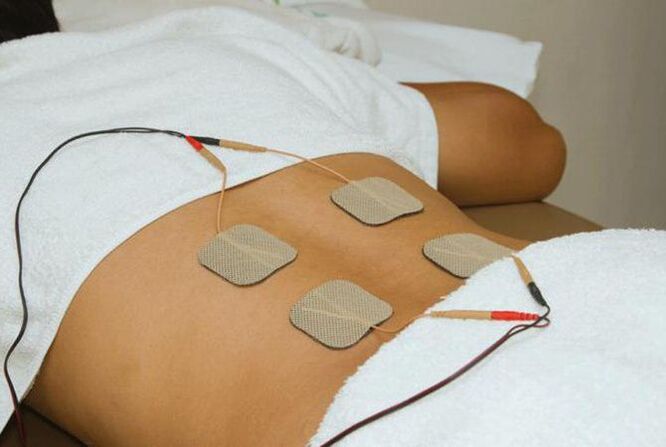
Adhesion therapy
Traction therapy allows you to increase the distance between the vertebrae of the chest spine, which will reduce the pressure on the intervertebral discs affected by osteochondrosis.This will stop the progression of the disease and create optimal conditions for the repair of cartilage tissue.Traction therapy or spinal adhesion is performed on a special table under the supervision of medical specialists.
Thus, although thoracic osteochondrosis is not a common disease, it can significantly reduce the quality of life of a person and lead to the development of a number of pathologies of the internal organs.At the same time, the difficulty of diagnosing it works against the patient, as degenerative changes in the intervertebral discs continue to deteriorate without proper treatment.As a result, complications often develop in such situations, including the formation of protrusions and intervertebral hernias.Therefore, it is important not to ignore changes in well -being and to consult a doctor immediately and to diagnose thoracic osteochondrosis, strictly follow the recommendations obtained by it.



















